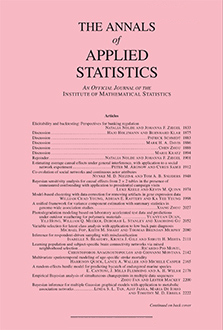Abstract
Substantial statistical research has recently been devoted to the analysis of large-scale microarray experiments which provide a measure of the simultaneous expression of thousands of genes in a particular condition. A typical goal is the comparison of gene expression between two conditions (e.g., diseased vs. nondiseased) to detect genes which show differential expression. Classical hypothesis testing procedures have been applied to this problem and more recent work has employed sophisticated models that allow for the sharing of information across genes. However, many recent gene expression studies have an experimental design with several conditions that requires an even more involved hypothesis testing approach. In this paper, we use a hierarchical Bayesian model to address the situation where there are many hypotheses that must be simultaneously tested for each gene. In addition to having many hypotheses within each gene, our analysis also addresses the more typical multiple comparison issue of testing many genes simultaneously. We illustrate our approach with an application to a study of genes involved in obstructive sleep apnea in humans.
Citation
Shane T. Jensen. Ibrahim Erkan. Erna S. Arnardottir. Dylan S. Small. "Bayesian testing of many hypotheses × many genes: A study of sleep apnea." Ann. Appl. Stat. 3 (3) 1080 - 1101, September 2009. https://doi.org/10.1214/09-AOAS241
Information





